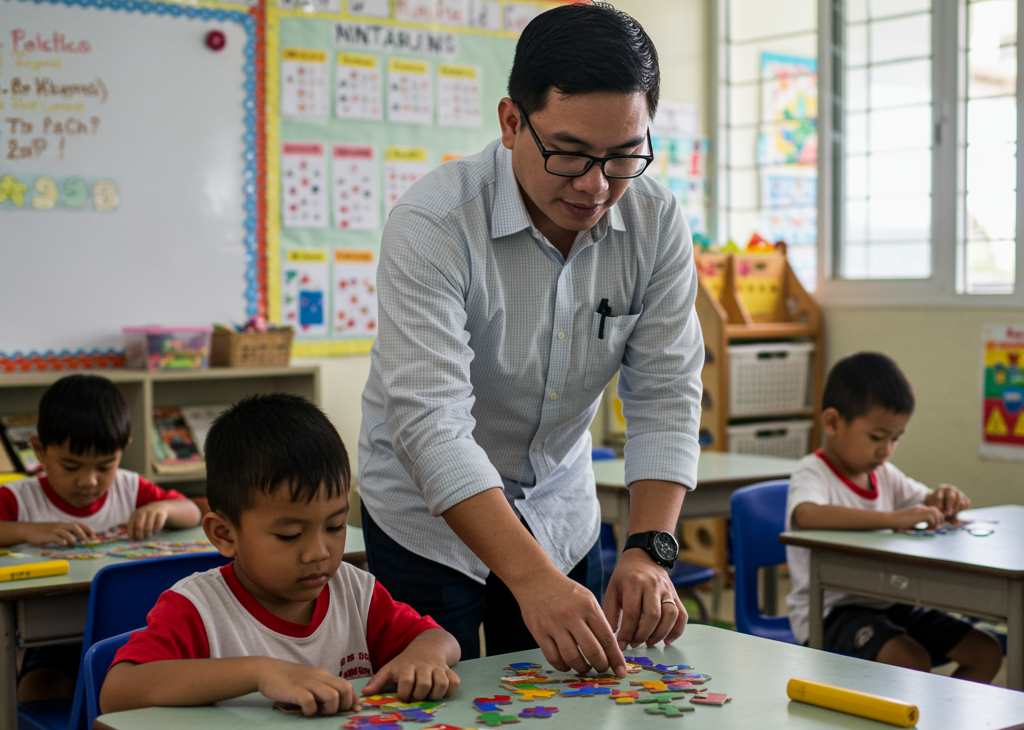California school districts face unique staffing challenges. When considering solutions, some might ask: Will international teachers stay long enough to truly integrate and impact our students? Is the process of bringing them here a worthwhile investment for California’s specific needs? Can they effectively navigate the California education system?
With strategic recruitment and robust support tailored to California’s context, international teachers can provide the stability, dedication, and fresh perspectives that California schools and districts need for long-term success.
Here’s how California districts can overcome these concerns and cultivate lasting relationships with international teaching professionals:
1. Retention: International Teachers are committed
Teacher retention is a critical issue in California. While districts understandably worry about turnover, international educators offer a unique pathway to long-term stability within the state.
Why International Teachers choose to stay in California:
- Embracing Opportunity in the Golden State: For many, teaching in California represents a significant professional and personal aspiration. They arrive eager to contribute and build a lasting career here.
- Visa Stability: Many international educator programs involve multi-year contracts, ensuring a commitment to California districts for a defined period, providing valuable consistency.
- Personal Investment in California Life: International teachers often establish deep roots in their communities, making them less inclined to move between districts within California or leave the state altogether.
2. The hiring process: A worthwhile investment for California’s future
While the initial hiring of international teachers might seem complex, with the right support, it becomes an efficient and effective strategy for addressing California’s critical staffing shortages.
Key Considerations for California Districts:
- Specialized Agency Support: Recruitment agencies experienced with California regulations handle the intricacies of visas, California teaching credentials, and state-specific compliance, allowing your district to focus on welcoming and integrating the new educator.
- Early Engagement for California Classrooms: Initiating the recruitment process early is crucial for California districts to secure highly qualified educators before the competitive school year begins.
- Immediate Impact on California Students: Once in California classrooms, international educators fill crucial vacancies, alleviate pressure on existing staff, and foster a more stable learning environment for California students.
3. Proper Preparation: International Teachers ready for California Classrooms
A common concern is whether international educators are adequately prepared for the specific demands of the California education system. In reality, these professionals undergo thorough vetting and preparation before entering California classrooms.
How International Educators Prepare for California:
- Pre-Departure and Arrival Training: Many agencies offer specific cultural orientation and professional development tailored to the U.S. education system, including insights into California’s standards and practices.
- Strong Qualifications: International educators often possess advanced degrees and bring valuable years of teaching experience in their subject areas, aligning with California’s emphasis on qualified instructors.
- Adaptability for California’s Diverse Environment: The experience of moving to a new country fosters resilience and a growth mindset – qualities essential for navigating the diverse student populations and educational environments within California.
4. Building a supportive environment: Key to retention in California
While international teachers arrive prepared, California Districts play a crucial role in ensuring they feel welcomed, supported, and integrated into the unique context of California schools and communities.
Best Practices for California Districts:
- Mentorship Programs Tailored to California: Pair international educators with experienced California colleagues who understand the state’s educational landscape and can provide guidance on local practices and resources.
- Open Communication Channels: Encourage regular check-ins to address any concerns specific to adapting to California and to celebrate successes within the California school context.
- Recognition of Contributions to California Schools: Acknowledge the unique contributions of international educators to the school culture and the academic growth of California students.
5. International Teachers: a stable future
Hiring international educators is more than just filling immediate vacancies in California schools – it’s a strategic investment in the long-term stability and enrichment of your district and the educational experience of California students.
With the right support and understanding of the California context, these dedicated professionals become integral members of your team, contributing to student success and school improvement for years to come in the Golden State.
Long-Term Benefits for California Districts:
- Consistency in Hard-to-Staff Areas: International educators provide much-needed continuity in critical subject areas and underserved regions within California, reducing the disruptions caused by frequent turnover.
- Enriching California Classrooms with Global Expertise: Their diverse experiences and perspectives enrich the curriculum and foster global awareness among California students, preparing them for an increasingly interconnected world.
- Strengthening California Communities: International educators often develop strong ties to their California schools and local communities, further solidifying their commitment to the state and its students.
Understandably, districts might have questions about the long-term commitment and readiness of international educators. However, at International Alliance Group, we believe these concerns can be met with confidence through strategic partnerships. We empower districts to proactively plan and cultivate welcoming school environments, fostering enduring relationships with international teachers who bring not just stability, but a genuine passion and high level of expertise to your classrooms.
From our perspective at International Alliance Group, the enthusiasm and dedication of international teachers are clear. By working together, we can forge strong connections that enrich schools and uplift entire communities for years to come.
Ready to solve your staffing challenges and enrich your classrooms with dedicated, qualified international educators? Partner with us today and build long-term stability for your district. Contact us to learn how we can help. Register here today!
This blog was written by Global Workforce Development, powered by IAG, an organization dedicated to creating international job opportunities for professionals.


